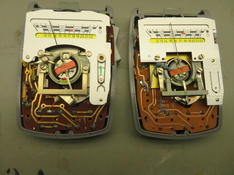Still planning to calibrate both of my Luna Pro meters with as simple (to me) means as possible. I think I know what to do, just need confirmation I don't miss anything obvious... A search for DIY light box yielded few treads from a few years ago, but people talk about importance of the right color temperature for proper calibration. I absolutely get that - if you don't already have a calibrated meter to compare against, then you need a light source with close to daylight color temp.
HOWEVER, I have a modern DSLR, factory calibrated. So, say, I build a miniature light box - the size of a plastic can for 35mm roll of film, with bright white LED shining straight into either the lens of the DSLR (through a plastic diffuser of some sort) or into Luna Pro sensor. The LED's light output is very easy to control by feeding it from the variable current power supply. LED's color temp does not really change with brightness, but for the sake of discussion let's assume I use bright an incandescent light bulb (like for a car headlight), which will be noticeably redder in color as brightness diminishes.
Tell me why should I care about color temp change if I'm adjusting Luna Pro circuit for a particular EV reading which will sure be wrong when compared to a day light's color temperature, but so will be wrong the perfectly calibrated DSLR's readout, error'ing *by the same amount*. All I care about is for both meters to show the same EV number, regardless if that EV number itself is really overexposing or underexposing because of "wrong" color temp. Basically, all I want is my Lina Pro to show identical readings to the DSLR, so it becomes as calibrated as the DSLR is.
Anything wrong with this logic? Basically, to get good prints on film/paper you DO need to know correct EV number for this particular color temp environment. But just for comparing two pieces of hardware you don't.
If both are off by 5EV because of wrong color temp, but track each other and one is factory calibrated correctly, I'm still happy and will assume the second piece of hardware will get calibrated just as correctly as the first "reference" one. Is that right?




